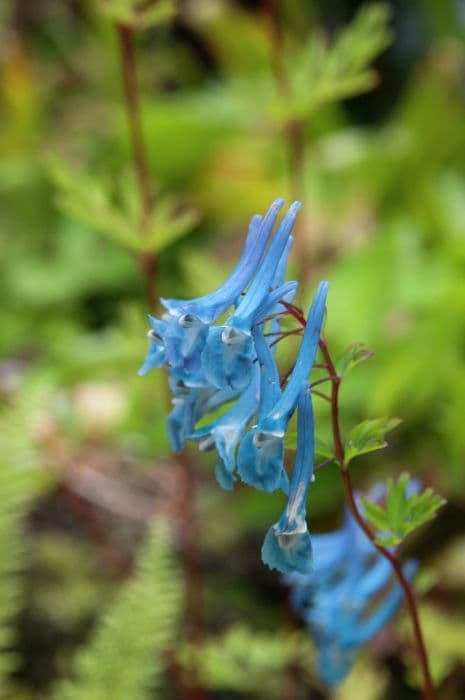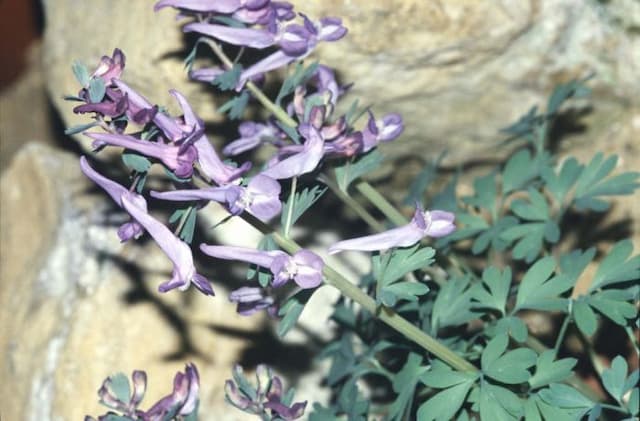Oriental poppy 'Mrs Perry' Papaver (Oriental Group) 'Mrs Perry'

ABOUT
'Mrs Perry' is a deciduous perennial to 1m tall, with bristly foliage and large, bowl-shaped salmon-pink flowers, blotched with dark purple at the base of each petal
About this plant
 Names
NamesFamily
Papaveraceae
Synonyms
Oriental Poppy, Mrs. Perry Oriental Poppy
Common names
Papaver orientale 'Mrs Perry'.
 Characteristics
CharacteristicsLife cycle
Perennials
Foliage type
Deciduous
Color of leaves
Green
Flower color
Pink
Height
2-3 feet (0.6-0.9 meters)
Spread
1-2 feet (0.3-0.6 meters)
Plant type
Herb
Hardiness zones
3-7
Native area
Caucasus, Northeast Turkey, Northern Iran
Benefits
 General Benefits
General Benefits- Attracts Pollinators: The plant is known to attract bees, butterflies, and other beneficial insects, which are essential for pollination.
- Low Maintenance: It does not require frequent watering or fertilizing, making it suitable for gardeners seeking low-maintenance plants.
- Drought Tolerance: Once established, it can withstand periods of drought, making it ideal for xeriscaping or gardens in dry climates.
- Ornamental Appeal: With its large, colorful flowers, the Oriental Poppy is a beautiful addition to any garden, adding a splash of color and visual interest.
- Seasonal Interest: It blooms in late spring to early summer, providing a seasonal display when many other plants have not yet peaked.
- Easy to Grow: The plant can thrive in a variety of soil types and conditions, as long as it has full sun exposure.
- Perennial Growth: As a perennial, it returns year after year, offering long-term value for a garden.
 Medical Properties
Medical PropertiesThis plant is not used for medical purposes.
 Air-purifying Qualities
Air-purifying QualitiesThis plant is not specifically known for air purifying qualities.
 Other Uses
Other Uses- Companion Planting: Oriental poppy 'Mrs Perry' can be used in companion planting to help protect vulnerable plants by attracting beneficial insects that prey on pest species.
- Dried Seed Pods: The seed pods of Oriental poppy 'Mrs Perry' are decorative and can be used in floral arrangements or as part of craft projects once dried.
- Color Dye: The petals of this poppy variety can produce a natural dye for fabrics or inks, although this use is not as common.
- Educational Tool: Oriental poppy 'Mrs Perry' can be used in educational settings, such as schools and nature classes, to teach about plant biology and pollination.
- Soil Improvement: After the blooming season, the decomposition of the plant’s foliage can enhance the nutrient content of the soil.
- Culinary Garnish: While it's essential to be cautious given that some parts of poppies can be toxic, the petals of Oriental poppy 'Mrs Perry' may be used as an ornamental garnish for sophisticated plating.
- Photography: Their vibrant color and large, showy flowers make Oriental poppy 'Mrs Perry' a popular subject for photographers and artists.
- Garden Themes: Oriental poppy 'Mrs Perry' can be utilized to create a specific color theme in gardens, such as a red and pink palette.
- Border Plants: They can act as border plants, creating a natural fence line or marking the edges of garden paths and beds due to their height and structure.
- Memory Gardens: Oriental poppy 'Mrs Perry' is sometimes planted in memory gardens as a living tribute to loved ones due to its striking appearance and perennial nature.
Interesting Facts
 Feng Shui
Feng ShuiThe oriental poppy is not used in Feng Shui practice.
 Zodiac Sign Compitability
Zodiac Sign CompitabilityThe oriental poppy is not used in astrology practice.
 Plant Symbolism
Plant Symbolism- Remembrance: Poppies are often associated with remembrance, especially for soldiers who have died during wartime. This symbolism is particularly strong due to the red poppies that grew over the battlefields of World War I.
- Peace: The poppy can also symbolize peace following conflict, as it was one of the first flowers to bloom in war-torn battlefields.
- Death: In addition to remembrance, poppies sometimes symbolize death, as a eternal sleep, linking it to the myth of Morpheus, the Greek god of dreams.
- Resilience: The poppy's ability to bloom after disturbance to the soil, such as that made by warfare, has made it a symbol of resilience and recovery.
- Beauty and Success: With their bright colors and large blooms, poppies are often associated with beauty and success in life.
- Consolation: In some contexts, poppies can represent consolation for a loss or death, offering comfort to those left behind.
 Water
WaterOriental poppies, including 'Mrs Perry', should be watered deeply yet infrequently to encourage deep root growth. Typically, watering once a week with one to two gallons of water per plant is sufficient, depending on the weather and soil conditions. Avoid overwatering as this can promote root rot. During the hot summer months, the watering frequency may need to increase, especially if you notice the leaves drooping or soil excessively dry. When watering, aim for the base of the plant and avoid wetting the foliage to help prevent fungal diseases.
 Light
LightOriental poppies like 'Mrs Perry' thrive in full sun, which means they require at least 6 hours of direct sunlight per day. Plant them in a location where they can enjoy uninterrupted sunlight to encourage the best growth and flowering. They can tolerate partial shade, but flowering may be reduced in these conditions. Avoid overly shaded areas as this can lead to poor blooming and leggy growth.
 Temperature
TemperatureOriental poppies such as 'Mrs Perry' are resilient in a wide range of temperatures and can survive winter cold down to -20°F. They perform best in temperate climates with summer temperatures that typically don't exceed 90°F. The ideal growing temperatures for 'Mrs Perry' are between 50°F and 75°F, when this plant is most actively growing and blooming.
 Pruning
PruningPrune Oriental poppies such as 'Mrs Perry' by cutting back the spent flower stems after blooming to maintain a tidy appearance and prevent self-seeding if you don’t want additional plants. Additionally, cut back the foliage in the late autumn after it dies back naturally. By pruning in this manner, you can encourage a possible second, albeit smaller, flush of flowers in the late summer or early fall.
 Cleaning
CleaningAs needed
 Soil
Soil'Mrs Perry' Oriental Poppy thrives best in well-draining soil enriched with organic matter, with a neutral to slightly acidic pH of 6.5 to 7.0. A mix of loam, sand, and compost is ideal.
 Repotting
RepottingOriental Poppies like 'Mrs Perry' generally do not need frequent repotting as they are perennials. However, division and repotting should occur every 5-6 years to maintain vigor.
 Humidity & Misting
Humidity & MistingOriental Poppy 'Mrs Perry' prefers moderate humidity levels but is quite adaptable and does not require specific humidity adjustments.
 Suitable locations
Suitable locationsIndoor
Place in bright light with ample air circulation.
Outdoor
Plant in full sun, well-drained soil, avoid wet areas.
Hardiness zone
3-7 USDA
 Life cycle
Life cycleThe Oriental Poppy 'Mrs Perry' begins its life cycle as a seed, which, when sown in fertile, well-drained soil during fall or spring, will germinate. Upon sprouting, the seedling will establish a rosette of leaves at the soil surface and develop a deep taproot, preparing for winter dormancy if planted in fall. In its second year, the plant will produce a notable stalk during late spring to early summer, topped with large, salmon-pink flowers with black blotches at their bases. After blooming, the plant sets seed in a capsule that, when mature, splits open to release its seeds. Following seed dispersion, the above-ground foliage dies back, allowing the plant to enter a period of summer dormancy while the root system remains alive underground. The Oriental Poppy 'Mrs Perry' will then rest until the next spring, when it will regrow, repeating its annual cycle of bloom and dormancy.
 Propogation
PropogationPropogation time
Spring
The Oriental Poppy 'Mrs Perry' is typically propagated by seed. The best time to sow these seeds is in late summer to early autumn, as poppies require a period of cold stratification to germinate. To propagate by seed, prepare a well-draining soil mixture and scatter the tiny seeds on the surface, pressing them gently into the soil without covering them, as they need light to germinate. Keep the soil moist but not waterlogged, and expect germination to occur when temperatures start to increase in the spring. Though patience is necessary because they can be slow to bloom when grown from seed, often taking a couple of years to establish themselves and flower profusely.









